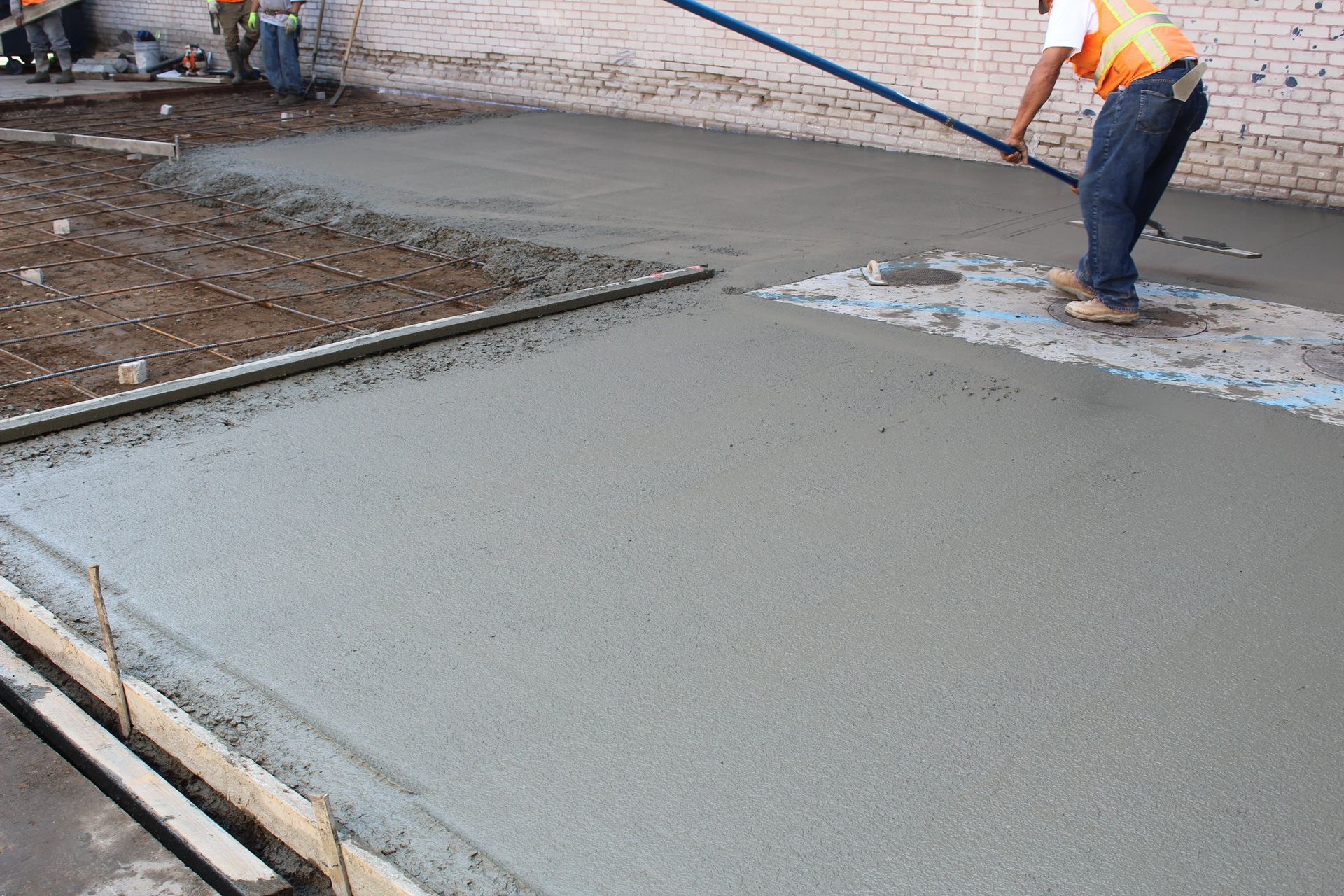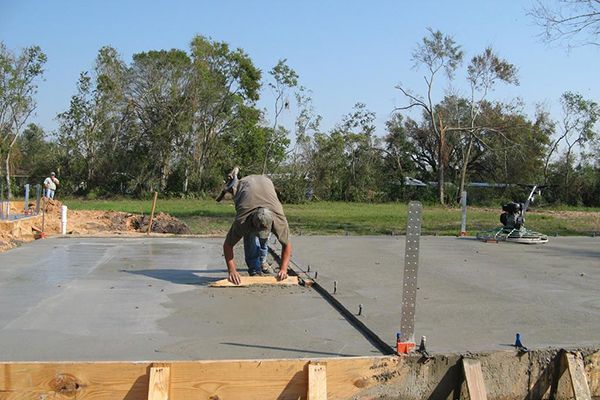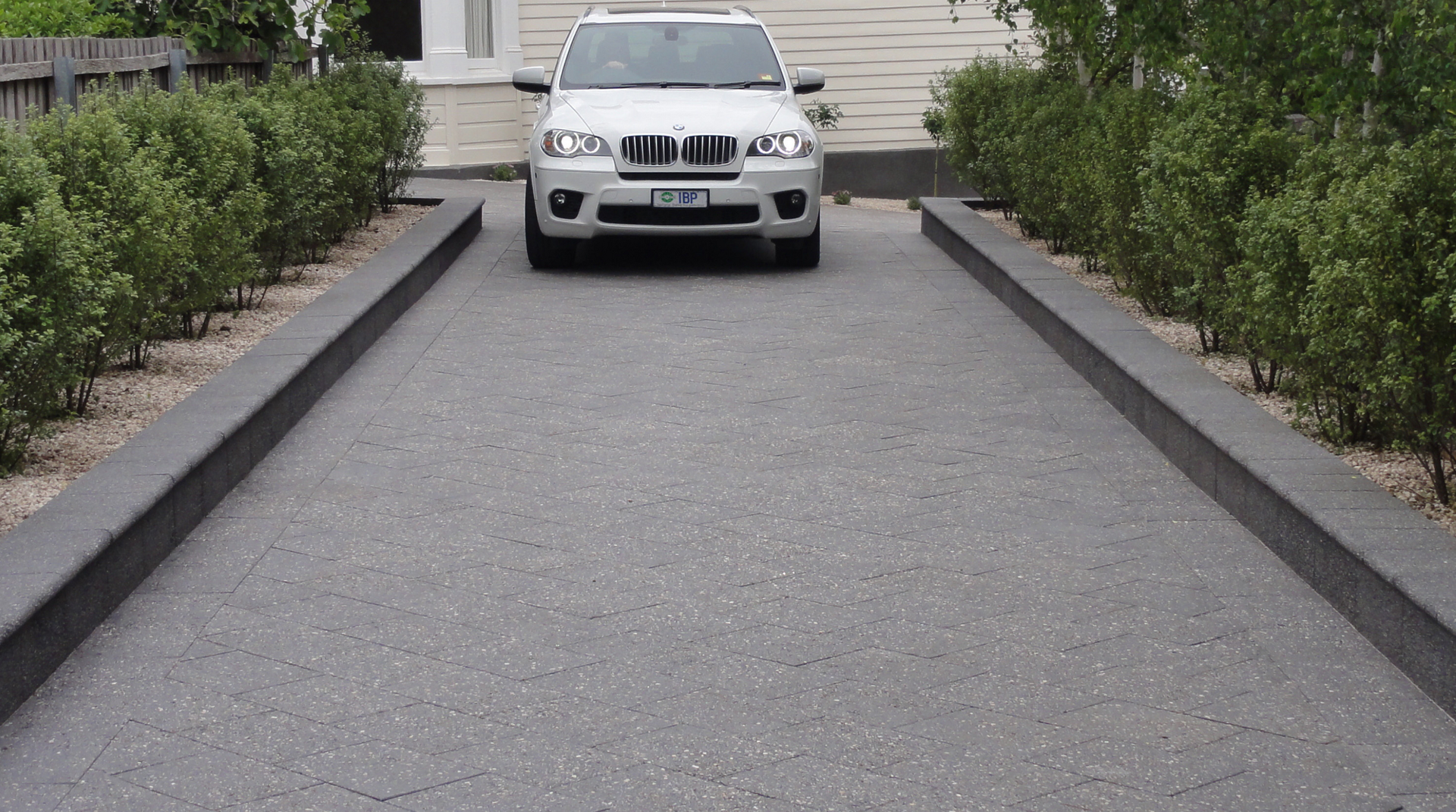Available Now
How Long Until You Can Drive on a New Concrete Driveway
Driving on a New Concrete Driveway: When is it Safe?

Typically, you should wait 7 to 10 days before driving on a new concrete driveway. This gives the concrete enough time to become strong and durable, ensuring it can handle the weight of your vehicle.
- Concrete Curing is Crucial: Proper curing ensures your driveway's strength, durability, and longevity.
- Temperature Matters: Extreme heat and cold can impact curing, so maintain ideal temperature conditions.
- Moisture is Vital: Adequate moisture levels prevent drying out and ensure a robust concrete surface.
- Weather Affects Timing: Be mindful of weather conditions as they can influence curing speed.
- Curing Times Vary: Factors like mixture proportions and environmental conditions determine the ideal curing time.
Introduction
Driving on a new concrete driveway can be an exciting experience, but the question that often plagues homeowners is when it's truly safe to do so. In our previous discussion, we explored the concrete curing process, industry recommendations, specific timeframes, precautions, and the impact of weather on driving on a new concrete driveway. Now, we're going to delve even deeper into the fascinating world of concrete curing. We'll discuss how temperature and moisture affect the curing process, why weather conditions matter, and how varying curing times can be influenced by factors like mixture proportions and specified strength.

Concrete Curing Process: A Deeper Dive
| Table 1: Recommended Curing Timeframes | |
|---|---|
| Condition | Recommended Curing Timeframe |
| Normal Weather | 7 to 10 days |
| Hot Weather | 5 to 7 days |
| Cold Weather | 14 to 28 days |
Temperature Sensitivity
One crucial aspect to consider in the concrete curing process is temperature sensitivity. The temperature in which concrete cures significantly impacts its strength and durability. Here's what you need to know:
- Higher Temperatures: While higher temperatures can accelerate curing, there's a caveat. If it's too hot, it can lead to surface cracking and reduced concrete strength. So, the Goldilocks principle applies here – not too hot, not too cold, but just right. If you're experiencing cracking concrete in Cairn consider enlisting the help of top concreting services in Cairns.
- Cold Temperatures: On the flip side, cold temperatures slow down curing and may even cause freezing, which severely weakens the concrete. This means that when curing concrete in cold weather, additional precautions are essential to prevent freezing.
The Role of Moisture
Moisture is a crucial element in the concrete curing process. Properly cured concrete needs to maintain adequate moisture levels for several reasons:
- Continued Hydration: Moisture allows the concrete to continue hydrating, a chemical reaction between water and cement particles that ensures strength development, resistance to freezing, and overall durability.
- Preventing Drying: Adequate moisture levels prevent the concrete from drying out too quickly, delaying drying shrinkage until the concrete is strong enough to resist shrinkage cracking.
In essence, without moisture, the curing process cannot be effective, and the concrete may not reach its full potential in terms of strength and durability.
Weather's Impact on Curing Time

Hot and Dry Weather
Weather conditions significantly influence the curing time of concrete. In hot and dry weather, you might notice that the curing process seems to move faster. This is because higher temperatures can speed up curing. However, here's the catch – if it's excessively hot and dry, it can lead to surface issues like cracking and a reduction in strength. So, even in such conditions, patience remains key.
Rainy Weather
On the flip side, rainy weather can pose its own challenges. Rainfall during the curing process can wash off cement from the surface, weakening it. This can lead to problems like surface cracks and delays in the curing process, ultimately affecting the quality of the finished surface. To mitigate this, covering the concrete or providing shelter during rainy weather is advisable.
Varying Curing Times
Factors Influencing Curing Time
The time required for concrete to cure adequately can vary significantly based on several factors:
- Mixture Proportions: The specific mix used can impact curing time. Some mixtures may cure faster or slower than others.
- Specified Strength: If a particular level of strength is required, it may necessitate a longer curing period to achieve that strength.
- Environmental Conditions: The surrounding environment plays a substantial role. For instance, slabs on the ground may require a minimum curing period of seven days for ambient temperatures above freezing.
Understanding these factors can help you determine the most appropriate curing time for your concrete driveway, ensuring it reaches the desired level of strength and durability.
The Impact of Rain During Curing
Rainfall Consequences
Rainfall during the curing process can have detrimental effects on the concrete surface. It can weaken the concrete, potentially leading to issues like surface cracking and delays in curing. This ultimately affects the overall quality of the finished surface. Therefore, it's crucial to protect your concrete driveway from rain, especially during the critical curing period.
Curing Methods: Ensuring Success
Proper Methods for Effective Curing
To ensure that your concrete driveway cures effectively and attains its maximum strength and durability, several curing methods can be employed:
- Water Cure: This involves flooding, ponding, or mist spraying the concrete. It's considered the most effective method to prevent mix water evaporation and maintain moisture levels.
- Water Retaining Methods: Using coverings like sand, canvas, burlap, or straw that are kept continuously wet can also be effective in retaining moisture.
- Waterproof Paper or Plastic Film Seal: Once the concrete is hard enough to resist surface damage, applying a waterproof paper or plastic film seal can help maintain the necessary moisture levels.
- Chemical Membranes: These can be applied as soon as the concrete is finished, providing a protective barrier against moisture loss.
Water Curing: One noteworthy point is that concrete that is moist cured for seven days is approximately 50% stronger than uncured concrete. Water curing can be achieved by building dams around the house and flooding the slab. While the ideal curing period is seven days, some builders opt for three days, still achieving around 80% of the seven-day curing benefit.
| Table 5: Precautions During Curing | |
|---|---|
| Precaution | Why it's Important |
| Avoid Heavy Vehicles | Prevents surface cracking |
| Protect from Sharp Objects | Prevents surface damage |
| Minimize Foot Traffic | Ensures even curing |
| Keep Pets Off Initially | Avoids pet claw damage |
Curing Concrete in Cold Weather: A Special Consideration
Cold Weather Challenges
Curing concrete in cold weather presents unique challenges due to the risk of freezing. Here's what you should keep in mind:
- Freezing Weakens Concrete: Concrete that freezes before reaching its full strength becomes significantly weakened, compromising its durability and long-term performance.
Recommended Techniques for Cold Weather Curing
To effectively cure concrete in cold weather, consider these techniques:
- Leave Forms Longer: Forms help retain heat and prevent premature drying of the concrete. The exact duration varies, so it's advisable to consult with a supplier for guidance.
- Avoid Pouring on Frozen Ground: Pouring concrete on frozen ground during winter can lead to uneven curing, resulting in a slab that's only strong near the surface. Ensuring the ground is adequately thawed is crucial.
- Use Heated Enclosures: External pour sites require enclosures to mitigate the effects of low temperatures. Live steam curing is recommended, as it provides both heat and moisture.
- Warm Equipment: Ensure that all equipment, from formworks to finishing tools, is not too cold when in contact with the concrete. Cold equipment can affect the curing process.
- Gradual Cooling: After heating, avoid rapid cooling to prevent cracking or shrinkage. Gradually cool the concrete using insulating blankets and slowly loosen forms to retain heat.
- Internal Curing: This technique involves using pre-wetted aggregates in the mix to promote curing from within. It ensures even moisture distribution throughout the concrete, making the curing process more efficient. However, even with internal curing, temperature control remains essential to prevent freezing.
Conclusion
In the world of concrete curing, understanding the nuances of temperature, moisture, weather conditions, and various curing methods is crucial for ensuring your new concrete driveway achieves its maximum strength, durability, and longevity. While the general guidelines for when it's safe to drive on a new concrete driveway are valuable, taking into account these additional factors will help you make informed decisions for your specific circumstances.
Remember, patience during the curing process is key to enjoying a beautiful and resilient concrete driveway for years to come. By following the right methods and considering the environmental factors at play, you can drive on your new concrete driveway with confidence, knowing it's built to last.

Additional Resources and References
In crafting this comprehensive guide on "How Long Until You Can Drive on a New Concrete Driveway," I've drawn upon a wealth of valuable resources and references. These expert insights ensure the accuracy and reliability of the information presented in this article.
https://www.concretenetwork.com/curing-concrete/#:~:text=After%20concrete%20is%20placed%2C%20the,house%20and%20flooding%20the%20slab
https://everreadymix.co.uk/news/curing-concrete-how-cold-weather-affects-curing-time/
FAQs
Can you drive on concrete after 5 days?
Driving on concrete after five days may be feasible under certain conditions, such as mild weather and proper curing techniques. However, it's essential to exercise caution and avoid heavy vehicles during this period.
Can you drive on new concrete after 3 days?
Driving on new concrete after three days is possible in some cases, but it's generally advisable to wait longer to ensure the concrete has adequate strength. Be especially cautious about heavy vehicles during this timeframe.
Can I drive on concrete after 2 days?
Driving on concrete only two days after installation is not recommended, as the concrete is still in the early stages of curing and may not have sufficient strength to withstand vehicle weight. Waiting longer is advisable.
How long before you can drive on concrete in Australia?
The recommended waiting time for driving on new concrete driveways in Australia is similar to industry standards, typically seven to ten days. However, it's important to consider local climate conditions and follow the guidance of your concrete contractor.
What happens if you drive on concrete too soon?
Driving on concrete before it's adequately cured can result in various issues, including surface cracking, indentation, and reduced long-term durability. It's essential to wait for the recommended curing period to avoid these problems and ensure the concrete's longevity.
GET IN TOUCH
Need more information? Speak to one of our experts and get personalised advice on your project to bring your vision to life. Contact us today to schedule your consultation or request a free consultation.
Contact Us
Thank you for submitting a quote request. We'll get back to you shortly!
Oops, there was an error in sending your message.
Please try again later.
YOU MIGHT ALSO LIKE...
YOU MIGHT ALSO LIKE...



Fast & Free Estimates, Call Now.
Contact us anytime via phone call or email.
Cairns' Best Concreters since 2010.
Licensee: Michael Stubbs
QBCC:
1267154
This is a referral .website, please visit our Privacy Policy and Terms of Service for more information.
Services
Working hours
- Mon - Sun
- -
Don't be shy give us a call! If we're too busy to take your call right away, one of our specialists will get back to you as soon as possible.
All Rights Reserved | Concrete Cairns
New Paragraph



